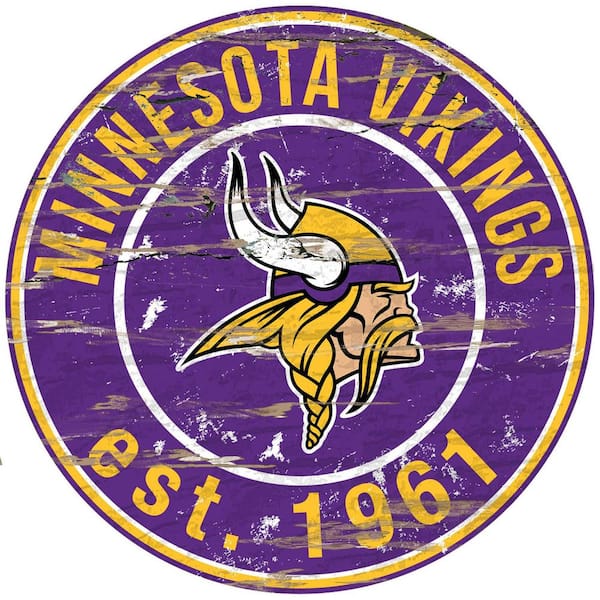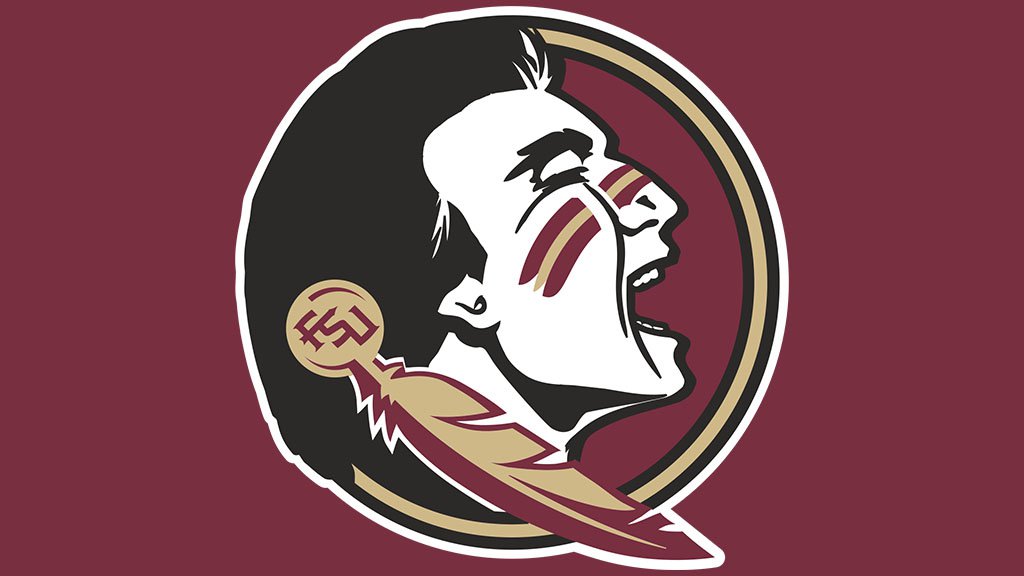Post by Purple Pain on Oct 19, 2022 10:03:18 GMT -6
Seifert: Situational masters? How 5-1 Vikings are thriving and what they still need to fix
What they need to improve
The Minnesota Vikings are off to a 5-1 start, one of four NFL teams with one or fewer losses, and no one can say yet if they're for real.
They have played only one game against a team currently with a winning record, and that matchup ended in a resounding 24-7 loss to the Philadelphia Eagles. Their past four wins have been decided by an average of 5.5 points, and three have required comebacks from fourth-quarter deficits and the yardage differential with their opponents (-270) ranks No. 25 in the league.
The early success in their season, however, hasn't been an accident. The Vikings have excelled in what new coach Kevin O'Connell has called "winning in the margins" -- dominating the hidden facets of football that can influence outcomes. O'Connell has asked players to be "situational masters," drilling home the finer parts of competition to a veteran team that was ready to absorb the message after losing nine one-score games last season under former coach Mike Zimmer.
"I think it comes down to those margins," O'Connell said, "and how can we be good on some plays and situations that maybe don't always get talked about on Monday morning. But they're winning plays and winning philosophies for us currently now as we continue to move forward. [But] those margins become even smaller and we're going to have to be that much better."
As they enter their bye week, let's look at six ways the Vikings are winning, based on observations and reporting this season. Then we'll address three areas where the Vikings should work to improve.
"We need to play better," quarterback Kirk Cousins said. "We need to execute better, but it's great to have those conversations after a win as opposed to a loss."
How they're winning
Situational masters: The Vikings' offense ranks No. 10 in the NFL in scoring (23.2 points per game), but its timing has been particularly important. Their offense leads the league in win probability added (WPA), a measure of the overall impact of the periods it has played well.
The Vikings have started and closed out games well. They scored first in all five of their wins and rank No. 5 with an average of 8.5 points per fourth quarter.
O'Connell has stressed the value of the minutes before halftime, where teams can often take or lose control of a game. In part because of his aggressive playcalling and game management in those moments, the Vikings lead the NFL with 59 points in the final four minutes before halftime.
The offense hasn't made many explosive plays, as I'll explain later, but the ones it has produced have come in key times. Cousins threw back-to-back 28-yard passes to receiver K.J. Osborn on a winning drive in Week 3, and his 39-yard floater to receiver Justin Jefferson set up the winning field goal in Week 4.
Players have also responded to weekly meetings designed to teach game management theories. Cornerback Cameron Dantzler Sr., for example, eschewed a potential touchdown return after forcing and recovering a fumble late in a Week 5. Instead, he gave himself up rather than giving another possession to the Chicago Bears, who were out of timeouts.
"There's so many scenarios that can win or lose you a game," nickelback Chandon Sullivan said. "You don't want to lose a game in those last seconds."
Sports science: Beginning with OTAs, O'Connell installed a training regimen heavily influenced by sports science theories. Most of his offseason practices were at less than full speed, his training camp featured only a handful of intensely physical periods and most veterans saw little to no preseason work.
But players were physically ready when the season began. Of their 28 primary players -- including 22 starters, three specialists, Sullivan, No. 3 receiver Osborn and backup tight end Johnny Mundt -- only one has missed a game: safety Harrison Smith was out for one week because of a concussion.
Even tailback Dalvin Cook, who subluxed his shoulder in Week 3 and has a history of injuries, has played 236 snaps, his most through six games in his NFL career.
Organizational victories: One of O'Connell's most common public refrains is to thank executive director of player health and performance Tyler Williams and head athletic trainer Uriah Myrie. He has credited them not only with the success of their work during the offseason, but also their preparation for trips to London and Miami.
Williams advocated for a short stay in London, leading to a 70-hour stay there, and made a step-by-step presentation to players for acclimation on both sides of the trip. It included recommendations on when to sleep, when to push through, when to ingest caffeine and when to utilize melatonin. The team beat the Saints and returned to defeat the Bears the following week.
Players began hydrating a week in advance for a trip to Miami, where they took on the Dolphins in 86-degree heat. The organization rented air-conditioned benches and asked staffers to hold a portable canopy over players where possible. Cousins joked that he felt like an ancient Egyptian pharaoh being fanned on a throne, crediting vice president of operations and facilities Chad Lundeen and others for taking the initiative to do it.
"It made a difference," Cousins said, "because I'm sitting there really comfortable with an air-conditioned bench and a sunshade."
Special teams: The Vikings' special teams lead the NFL in expected points added (EPA), a metric that measures how well it does (or doesn't) perform compared to the league average. Led by first-time coordinator Matt Daniels, the Vikings have:
A rookie punter in Ryan Wright who ranks No. 10 in net punting (43.1 yards)
A punt returner in Jalen Reagor who ranks No. 11 in return average (8.3 yards)
A kickoff coverage unit that is holding opponents to 17.5 yards per return, No. 3 in the NFL
A punt coverage unit that is holding opponents to 5.3 yards per return, No. 6 in the NFL
Cornerback Patrick Peterson, meanwhile, blocked a field goal in Week 2.
Place-kicker Greg Joseph ranks No. 35 in the NFL with a 69.4% conversion rate, but all four of his missed field goals have been from 51 yards or longer.
Low turnovers and penalties: The Vikings are tied for the NFL's second-highest turnover margin (+4). They are also tied for the seventh-fewest turnovers (six), half of which came in the Eagles loss, and are tied for the fifth-most takeaways (10). Five of those takeaways have come in the fourth quarter, tied for second in the NFL, and two essentially sealed games: Forced fumbles in Week 5 (Dantzler) and Week 6 (Smith).
Meanwhile, the Vikings are tied with the Los Angeles Rams for the NFL's fewest penalties (28). There has never been a direct correlation established between number of penalties and victories, but everything counts if you're winning games in the margins.
Fortunate opponent absences: The Vikings played a Saints team in Week 4 that was without quarterback Jameis Winston, running back Alvin Kamara and receiver Michael Thomas. In Week 6, the Miami Dolphins played without quarterback Tua Tagovailoa and left tackle Terron Armstead. Replacement quarterback Skylar Thompson departed in the first half, thrusting Teddy Bridgewater into the game without having practiced at all during the week.
It's not unusual for opponents to be at less than full strength, but two of the Vikings' victories came against teams without their No. 1 quarterback. When juxtaposed against their own good health, such absences can't be ignored.
Jefferson: The Vikings' No. 1 receiver hardly exists in the "margins." He's one of the league's best players at a position that has continued to grow in importance, and the Vikings essentially run their offense through him. He ranks third in the NFL with 654 receiving yards and fourth with 46 catches.
How is he doing it, other than simply transcendent talent? To this point, O'Connell and the Vikings have been satisfied throwing him midrange passes rather than focusing on deep home runs. The average pass to Jefferson has traveled 8.3 yards in the air, shorter than 66 other NFL pass-catchers.
Which brings us to our next section ...
They have played only one game against a team currently with a winning record, and that matchup ended in a resounding 24-7 loss to the Philadelphia Eagles. Their past four wins have been decided by an average of 5.5 points, and three have required comebacks from fourth-quarter deficits and the yardage differential with their opponents (-270) ranks No. 25 in the league.
The early success in their season, however, hasn't been an accident. The Vikings have excelled in what new coach Kevin O'Connell has called "winning in the margins" -- dominating the hidden facets of football that can influence outcomes. O'Connell has asked players to be "situational masters," drilling home the finer parts of competition to a veteran team that was ready to absorb the message after losing nine one-score games last season under former coach Mike Zimmer.
"I think it comes down to those margins," O'Connell said, "and how can we be good on some plays and situations that maybe don't always get talked about on Monday morning. But they're winning plays and winning philosophies for us currently now as we continue to move forward. [But] those margins become even smaller and we're going to have to be that much better."
As they enter their bye week, let's look at six ways the Vikings are winning, based on observations and reporting this season. Then we'll address three areas where the Vikings should work to improve.
"We need to play better," quarterback Kirk Cousins said. "We need to execute better, but it's great to have those conversations after a win as opposed to a loss."
How they're winning
Situational masters: The Vikings' offense ranks No. 10 in the NFL in scoring (23.2 points per game), but its timing has been particularly important. Their offense leads the league in win probability added (WPA), a measure of the overall impact of the periods it has played well.
The Vikings have started and closed out games well. They scored first in all five of their wins and rank No. 5 with an average of 8.5 points per fourth quarter.
O'Connell has stressed the value of the minutes before halftime, where teams can often take or lose control of a game. In part because of his aggressive playcalling and game management in those moments, the Vikings lead the NFL with 59 points in the final four minutes before halftime.
The offense hasn't made many explosive plays, as I'll explain later, but the ones it has produced have come in key times. Cousins threw back-to-back 28-yard passes to receiver K.J. Osborn on a winning drive in Week 3, and his 39-yard floater to receiver Justin Jefferson set up the winning field goal in Week 4.
Players have also responded to weekly meetings designed to teach game management theories. Cornerback Cameron Dantzler Sr., for example, eschewed a potential touchdown return after forcing and recovering a fumble late in a Week 5. Instead, he gave himself up rather than giving another possession to the Chicago Bears, who were out of timeouts.
"There's so many scenarios that can win or lose you a game," nickelback Chandon Sullivan said. "You don't want to lose a game in those last seconds."
Sports science: Beginning with OTAs, O'Connell installed a training regimen heavily influenced by sports science theories. Most of his offseason practices were at less than full speed, his training camp featured only a handful of intensely physical periods and most veterans saw little to no preseason work.
But players were physically ready when the season began. Of their 28 primary players -- including 22 starters, three specialists, Sullivan, No. 3 receiver Osborn and backup tight end Johnny Mundt -- only one has missed a game: safety Harrison Smith was out for one week because of a concussion.
Even tailback Dalvin Cook, who subluxed his shoulder in Week 3 and has a history of injuries, has played 236 snaps, his most through six games in his NFL career.
Organizational victories: One of O'Connell's most common public refrains is to thank executive director of player health and performance Tyler Williams and head athletic trainer Uriah Myrie. He has credited them not only with the success of their work during the offseason, but also their preparation for trips to London and Miami.
Williams advocated for a short stay in London, leading to a 70-hour stay there, and made a step-by-step presentation to players for acclimation on both sides of the trip. It included recommendations on when to sleep, when to push through, when to ingest caffeine and when to utilize melatonin. The team beat the Saints and returned to defeat the Bears the following week.
Players began hydrating a week in advance for a trip to Miami, where they took on the Dolphins in 86-degree heat. The organization rented air-conditioned benches and asked staffers to hold a portable canopy over players where possible. Cousins joked that he felt like an ancient Egyptian pharaoh being fanned on a throne, crediting vice president of operations and facilities Chad Lundeen and others for taking the initiative to do it.
"It made a difference," Cousins said, "because I'm sitting there really comfortable with an air-conditioned bench and a sunshade."
Special teams: The Vikings' special teams lead the NFL in expected points added (EPA), a metric that measures how well it does (or doesn't) perform compared to the league average. Led by first-time coordinator Matt Daniels, the Vikings have:
A rookie punter in Ryan Wright who ranks No. 10 in net punting (43.1 yards)
A punt returner in Jalen Reagor who ranks No. 11 in return average (8.3 yards)
A kickoff coverage unit that is holding opponents to 17.5 yards per return, No. 3 in the NFL
A punt coverage unit that is holding opponents to 5.3 yards per return, No. 6 in the NFL
Cornerback Patrick Peterson, meanwhile, blocked a field goal in Week 2.
Place-kicker Greg Joseph ranks No. 35 in the NFL with a 69.4% conversion rate, but all four of his missed field goals have been from 51 yards or longer.
Low turnovers and penalties: The Vikings are tied for the NFL's second-highest turnover margin (+4). They are also tied for the seventh-fewest turnovers (six), half of which came in the Eagles loss, and are tied for the fifth-most takeaways (10). Five of those takeaways have come in the fourth quarter, tied for second in the NFL, and two essentially sealed games: Forced fumbles in Week 5 (Dantzler) and Week 6 (Smith).
Meanwhile, the Vikings are tied with the Los Angeles Rams for the NFL's fewest penalties (28). There has never been a direct correlation established between number of penalties and victories, but everything counts if you're winning games in the margins.
Fortunate opponent absences: The Vikings played a Saints team in Week 4 that was without quarterback Jameis Winston, running back Alvin Kamara and receiver Michael Thomas. In Week 6, the Miami Dolphins played without quarterback Tua Tagovailoa and left tackle Terron Armstead. Replacement quarterback Skylar Thompson departed in the first half, thrusting Teddy Bridgewater into the game without having practiced at all during the week.
It's not unusual for opponents to be at less than full strength, but two of the Vikings' victories came against teams without their No. 1 quarterback. When juxtaposed against their own good health, such absences can't be ignored.
Jefferson: The Vikings' No. 1 receiver hardly exists in the "margins." He's one of the league's best players at a position that has continued to grow in importance, and the Vikings essentially run their offense through him. He ranks third in the NFL with 654 receiving yards and fourth with 46 catches.
How is he doing it, other than simply transcendent talent? To this point, O'Connell and the Vikings have been satisfied throwing him midrange passes rather than focusing on deep home runs. The average pass to Jefferson has traveled 8.3 yards in the air, shorter than 66 other NFL pass-catchers.
Which brings us to our next section ...
What they need to improve
























 ... and neither is this Chris guy.
... and neither is this Chris guy.